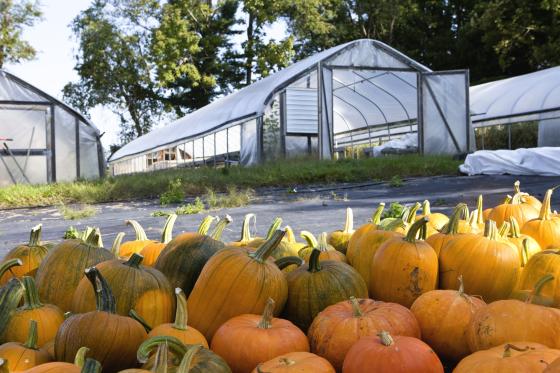Posted March 17, 2022 at 10:36am by Anonymous (not verified)
Farmland investment companies

Written by Kathy Ruhf
Farmland access and affordability are top obstacles for new and beginning farmers in New England and nationally. Many new farmers cannot afford to purchase land to start or expand their operations. At the same time nearly 30% of New England farmers will exit farming in the next decade. 90% of them do not have a younger farm operator working with them, but most senior farmers without successors want to keep their land in farming and pass on their farms to a new generation of farmers.
Addressing these land access challenges requires creative approaches and new partners. And, with investment companies buying farm and ranch land across the country, what potential does private, “values-based” investment capital hold to provide affordable, secure access to farmland for farmers? This is the focus of Land For Good’s most recent investigation of farmland investment in New England.
This investigation of farmland investors’ role in Vermont speaks directly to at least two of Vermont’s Farm To Plate food system plan goals. As “food system investors” the companies working in Vermont are leveraging their assets and their social goals as new partners in the state’s pool of financing resources (Leveraging Financial Resources Goal). Their commitment to mutually beneficial arrangements between farmers and private capital also contributes making agricultural lands available, affordable and conserved for new, future and other Vermont farmers (Land in Agriculture Goal).
Could farmers working with farmland investment companies represent an innovative model for land access?
For example, an investment company can purchase a property sought by a farmer, but one which he or she is not able to immediately purchase. The company then rents-to-sell to the farmer which may be more viable for the farmer and meets investors’ objectives, too. What other factors might influence a farmer’s choice to work with a farmland investment company?
These questions are answered in a recently released report, Farmland Investment Models: Innovative Land Access in New England. The report shares the findings and analyses of an investigation of four farmland investment companies; companies that espouse a social mission, and acquire farmland in New England. The project, conducted in partnership with the University of Vermont Extension Center for Sustainable Agriculture, had two goals. The first was to help farmers better understand these models in order to make informed decisions about engaging with them. The report also provides guidelines for farmers considering working with investment companies, feedback from farmer focus groups and legal and financial analysis, and case studies.
The second goal was to enable farmers to contribute constructive feedback about the models. Observations and recommendations for farmers were based on two focus groups with farmers, including one in dialogue with the investment companies, and a review of company materials by a team of legal and financial advisors.
“It’s incredible to witness over the past five years how investors across the country, and now in the Northeast, have purchased thousands of acres of farmland as a way to earn returns and appreciate capital,” said Ben Waterman, New Farmer Program Coordinator at UVM Center for Sustainable Agriculture. “This project was unique because we had the chance to hear directly from farmers. We gained insight into their legitimate concerns, what they are excited about, and which models might work best.”
This report increases our understanding of how some farmland investment companies work and how they differ—and analyzes the potential implications of these models for land access and security for farmers. The potential success of farmland investor models lies in their attractiveness for farmers as well as investors. Whether engaging with investment companies is the best land access strategy for a specific farmer, depends on that farmer’s financial position, the property in question, the proposed arrangement, and the other financing and land access options available. In the end, farmers will need to decide for themselves.
Read more
Download the Report Summary.
Download the Full Report.
This project was supported by grants from the Vermont Farm to Plate Network Fund, The Cedar Tree Foundation, and Sustainable Futures Fund of the Vermont Community Foundation, plus in-kind contributions from advisors. Special thanks to contributing authors on the Farmland Investment Models Report; Mike Ghia, Vermont Field Agent, Land For Good; James Hafner, Executive Director, Land For Good; Kathryn Ruhf, Senior Program Director, Land For Good; Ben Waterman, New Farmer Program Coordinator, University of Vermont Extension Center for Sustainable Agriculture.
